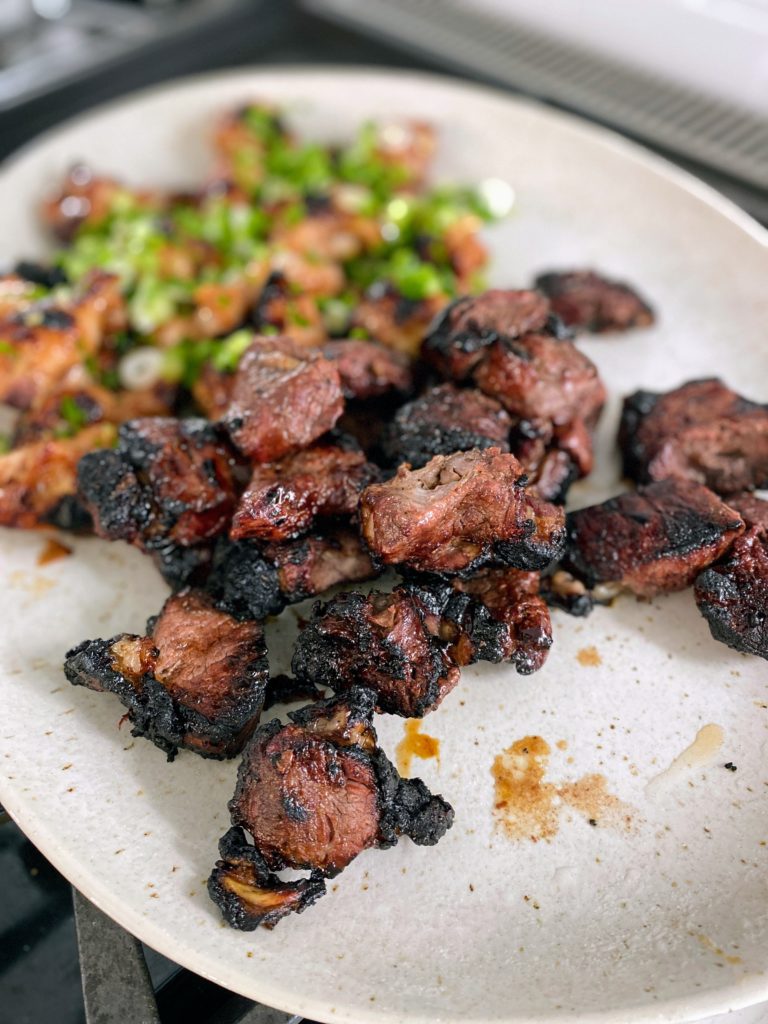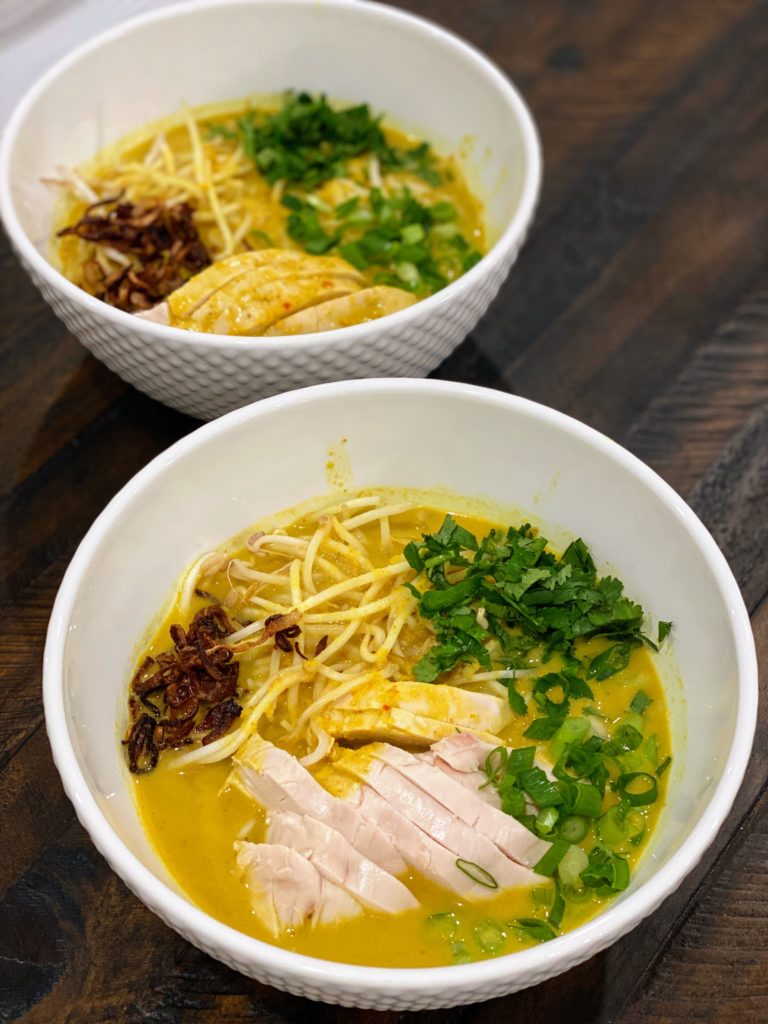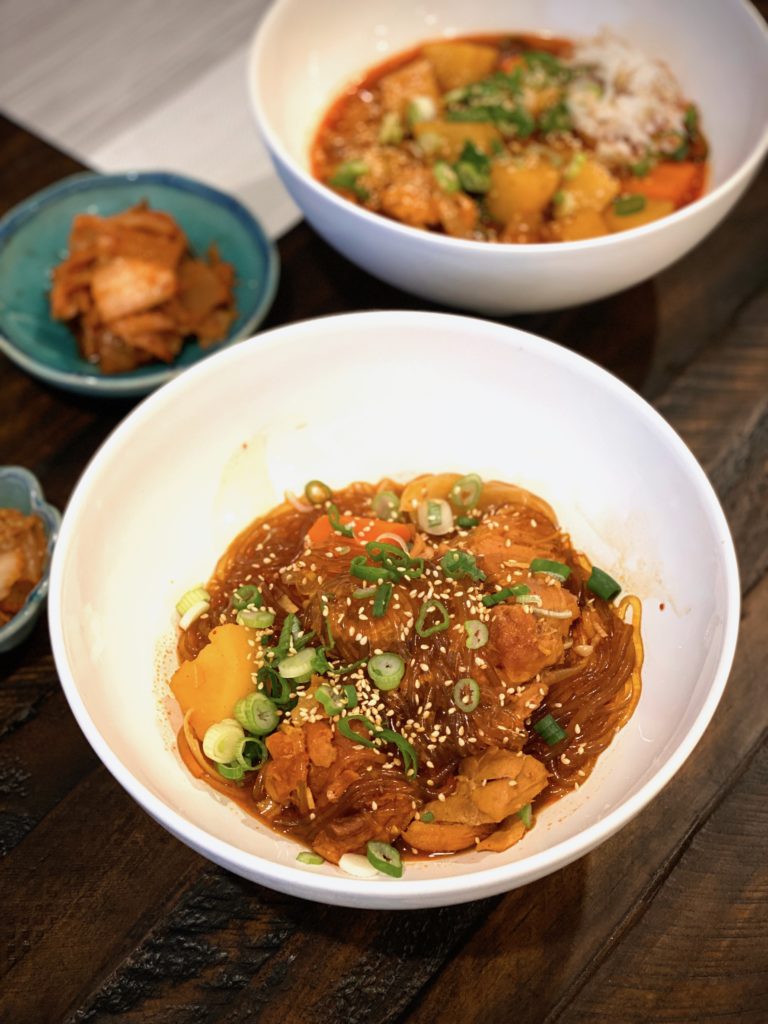This Southeast Asian-meets-Southwest American grilled steak is the perfect dish to ring in warmer weather. Adapted from Food & Wine, you can serve this with some rice and lettuce leaves alongside a pungent salty-spicy dipping sauce and it’s *chef’s kiss.* Marinating the steak is a bit of work but the results are worth it.

For the dipping sauce:
- 4 cilantro sprigs
- 8 garlic cloves
- 1 (1 1/2-inch) piece fresh ginger, peeled and roughly chopped
- 2 Thai or serrano chiles
- 1/2 cup lime juice
- 1/2 cup fish sauce
- 4 tablespoons sugar
- 1 green onion, thinly sliced
For the tri-tip:
- 2 1/4 cups (18 ounces) lager or IPA-style beer, divided
- 1 teaspoon salt
- 2 (2 1/2- to 3-pound) tri-tip steaks
- 1/2 bunch cilantro, roughly chopped
- 1/4 cup finely chopped lemongrass (from 2 stalks)
- 12 garlic cloves
- 2/3 cup oyster sauce
- 1/2 cup fish sauce
- 5 tablespoons brown sugar
- 2 teaspoons black pepper
- Vegetable oil, for grilling
- Cooked jasmine rice or sticky rice, and lettuce leaves, for serving
- Make the dipping sauce: Cut cilantro stems into 2-inch lengths. Combine cilantro stems, garlic, ginger, and chiles in a blender, and process on medium speed until finely chopped, about 30 seconds, stopping to scrape down sides as needed. Add lime juice, fish sauce, and sugar to blender, and process until combined, about 30 seconds. Stir in cilantro leaves and green onion slices.
- Make the tri-tip: Stir together 1 1/2 cups beer and salt in a gallon-size ziplock plastic bag until dissolved. Add steaks to bag, seal, and place on a rimmed baking sheet. Refrigerate 2 hours, turning bag and massaging steaks occasionally.
- Meanwhile, combine cilantro, lemongrass, and garlic in a blender, and process until finely minced, about 30 seconds, stopping to scrape down sides as needed. Add oyster sauce, fish sauce, brown sugar, pepper, and remaining 3/4 cup beer, and process on high speed until smooth, about 30 seconds. Remove steaks from refrigerator. Drain and discard beer mixture, and pour cilantro marinade over steaks in bag, massaging gently to coat steaks. Seal bag, and return steaks to refrigerator. Let marinate, turning bag and massaging steaks occasionally, at least 6 hours or up to 12 hours.
- Prepare a grill over medium-high heat. Remove steaks from plastic bag, and discard marinade. Grill steaks over direct heat, uncovered, flipping often, until caramelized, about 5 minutes. Transfer steaks to indirect heat. Cover and cook, flipping steaks occasionally, until steak is cooked to medium, about 35 minutes. Transfer steaks to a platter and let rest about 10 minutes. Thinly slice against the grain, and serve on rice or with lettuce leaves as wraps, alongside jeow som dipping sauce.




